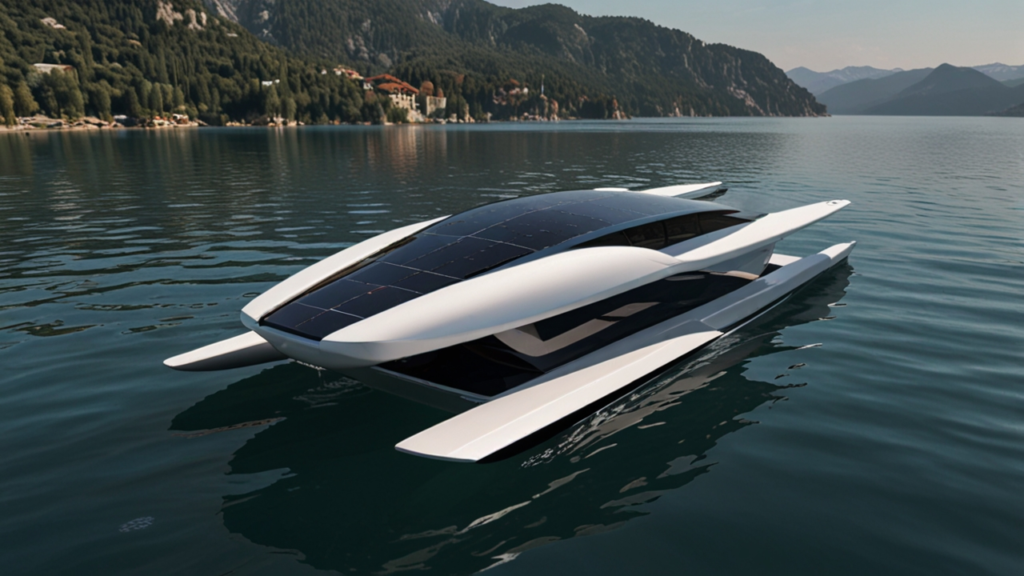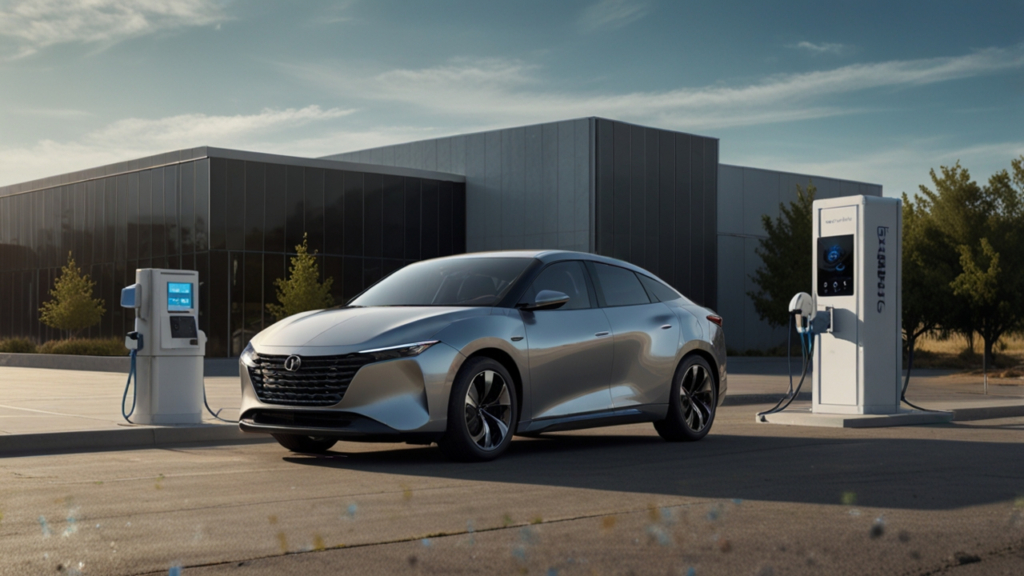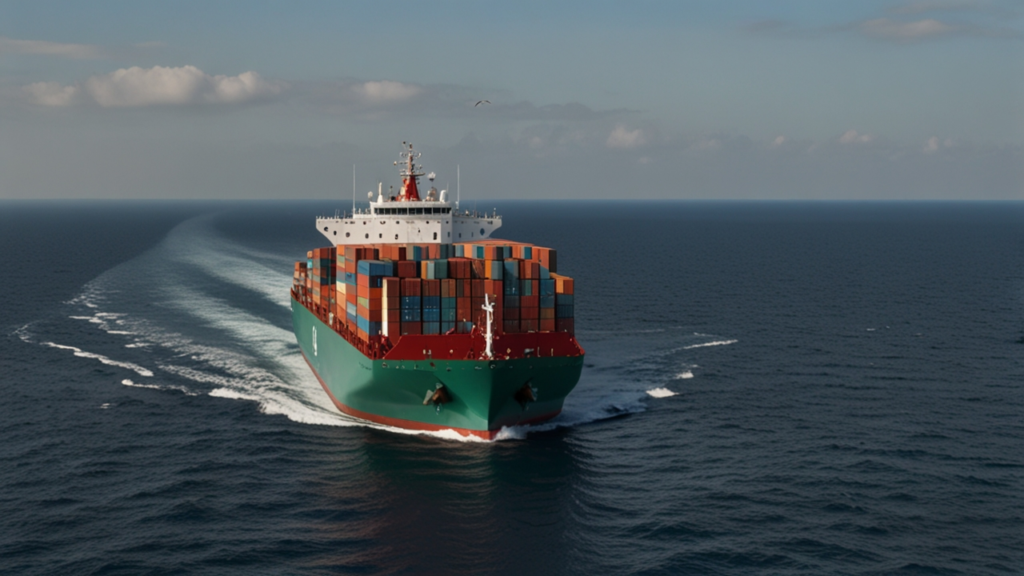Hydrofoil Transport: 5 Remarkable Benefits
Hydrofoil transport is revolutionizing water travel by offering revolutionary performance, efficiency, and environmental benefits. With its roots dating back to the late 19th century, this technology has evolved continuously to meet modern demands. In this article, you will learn about its historical evolution, technical methodologies, and real-world outcomes.
The simplicity behind lifting a vessel above the water generates substantial advantages in speed and energy consumption. You will also discover the various case studies and numerical data that outline the journey of this innovative system. Have you ever considered how ancient inventions are reimagined for today’s challenges?
This blog post has been designed to inform and engage all readers, regardless of your familiarity with marine technology. For more information on emerging transportation breakthroughs, visit Future Mobility.
Table of Contents
- Introduction to Hydrofoil Transport
- Evolution and History of Hydrofoil Transport
- How Water Skimming Vessels Enhances Hydrofoil Transport
- Maritime Efficiency Systems and Their Applications
- Real-World Case Studies of Hydrofoil Transport
- Drag Reduction in Modern Hydrofoil Transport Solutions
- Future Trends: Shipping Revolution and Beyond
Introduction to Hydrofoil Transport
Overview and Significance
Hydrofoil transport employs wing-like structures placed beneath boat hulls to lift the vessel above the water. This lift reduces resistance and fuel consumption while enabling high-speed travel. Researchers have recorded up to 75% less hydrodynamic drag in such systems.
One remarkable statistic is that modern systems can achieve speeds between 30 and 50 knots. These data come from studies published on Wikipedia (detailed study on hydrofoil evolution) and other credible industry resources. This technology bridges the gap between traditional seafaring and futuristic maritime efficiency.
In this section, we invite you to consider how improving speed and efficiency in water vessels might redefine your travel expectations. Have you ever pondered what it might feel like to glide effortlessly over the water?
Technical Introduction and Future Impact
The method behind hydrofoil transport is both simple and profound. By lifting the vessel’s hull above the water’s surface, designers overcome drag and inertia, creating smoother rides. This technology remains at the forefront due to its impressive performance advantages.
For instance, even military applications have harnessed these benefits, with the U.S. Navy testing Pegasus-class systems with speeds reaching over 48 knots—a fact substantiated by research from US Naval Institute.
Have you experienced waterborne travel that hints at the future of mobility? To explore more innovative perspectives, check out the insights on Emerging Transportation Technologies.
Evolution and History of Hydrofoil Transport
Early Innovations and Pioneering Designs
Hydrofoil technology was introduced by Enrico Forlanini in 1898 using his ladder-foil system. This system allowed boats to rise above the water, dramatically reducing drag. By 1908, pioneers like Alexander Graham Bell and Casey Baldwin had advanced the technology, setting water-speed records of 61.5 knots in the HD-4 vessel.
These groundbreaking milestones are elaborated in detailed documents such as the Meyer & Wilkins review, which discusses technical evolution and historical trends. The timeline of development shows progress from simple inventions to elaborate military and commercial applications.
Reflect on how technological advancements over a century have paved the way for efficient waterborne travel. What inspiration can you draw from such innovative history?
Post-War Expansion and Commercial Adoption
After World War II, the adoption of hydrofoil technology surged globally. The launch of the PT10 “Freccia d’Oro” on Lake Maggiore in 1952 by Supramar marked a vital point in commercial application. Meanwhile, the Soviet Union built over 400 Meteor-type vessels between the 1950s and 1980s, according to documented evidence from Laineet.fi.
This period transformed water transport, enabling fast and smooth passenger services across Europe, Asia, and the Soviet Union. The widespread adoption highlights the underlying efficiency of these designs.
How do you envision the evolution of similar technologies influencing today’s transport systems? For more on such trends, visit Smart Mobility.
How Water Skimming Vessels Enhances Hydrofoil Transport
Principles behind Water Skimming and Lift Generation
The core principle of water skimming is generating lift by using V-shaped surface-piercing foils and fully submerged foil designs. These systems effectively “skim” over the water, which minimizes friction and energy loss. Notably, studies show that up to 75% reduction in drag is achieved.
The technology relies on advanced materials like carbon fiber composites for durability and weight reduction. This combines with automated controls to stabilize the ride, even in turbulent waters.
How do you think improving the lift generation process could affect everyday water transport?
Enhanced Performance with Modern Materials
Modern developments in materials have greatly improved water skimming performance. For example, light yet durable composites combined with AI-based stabilization systems offer smoother and safer sea rides. These improvements also lower maintenance costs over time.
Recent research indicates that electric hydrofoil ferries, like Sweden’s Candela P-12, have achieved nearly 80% lower energy usage compared to traditional diesel engines. Such data are accessible on resources like SeaMagazine.
What advantages do you see in combining advanced materials with time-tested hydrofoil designs? Discover more by visiting Urban Transportation.
Maritime Efficiency Systems and Their Applications
Integration with Automated Navigation Systems
Maritime efficiency in hydrofoil transport also stems from integrating AI-based navigation systems. These automated features enhance safety and reduce human error. Consequently, this makes the vessels more dependable during high-speed transit.
With computerized stabilizers and digital controls, vessels can maintain optimal performance even as external conditions change rapidly. Such techniques are progressively detailed in reputable sources as generally accepted in the field.
What improvements can you foresee in navigation if these systems continue to evolve?
Electric Propulsion and Energy Savings
One of the biggest benefits is the switch from diesel to electric propulsion. Electric hydrofoil ferries are now being tested to reduce both operational costs and emissions. Technologies achieving up to 80% lower energy consumption are already proving successful.
This trend not only benefits the environment but also enhances overall system efficiency. Studies available on Britannica support these developments with influential data points.
Have you ever witnessed the benefits of electric propulsion in other sectors? For more insights, check out the Green Technology section.
Real-World Case Studies of Hydrofoil Transport
European Success and Commercial Impact
European case studies reveal remarkable improvements in hydrofoil transport efficiency. The Supramar PT10 in Switzerland and Italy has seen over 200 units built for lake transport across Europe and Asia. This legacy demonstrates how commercial adaptations can transform regional travel.
In Sweden, the electric Candela P-12 ferry has set benchmarks with a top speed of 30 knots and zero emissions. Operating in real-world conditions, these developments firmly substantiate claims of dramatic energy savings and performance. The data consistently reflect improvements noted in scholarly sources.
What real-life impact does such transformation in maritime travel offer to local communities?
North American and Australian Operations
In North America, commuter hydrofoils once served routes between New Jersey and Manhattan during the 1960s. Additionally, the U.S. Navy’s Pegasus-class vessels adapted hydrofoil technology for military engagement by achieving speeds over 48 knots. Such performance records highlight the potential for future innovations.
Similarly, in Australia, the iconic Manly ferry route in Sydney has long benefited from hydrofoil efficiency to provide faster travel. These examples illustrate widespread adaptation across various geographical regions.
Do you think these examples can lead to more widespread adoption globally? Examine similar topics through Energy Efficiency insights.
Comprehensive Comparison of Case Studies
| Example | Record | Speed (knots) | Region |
|---|---|---|---|
| HD-4 | World Speed Record | 61.5 | Canada |
| PT10 “Freccia d’Oro” | Commercial Launch | 30-50 | Europe |
| Meteor-type Vessels | Largest Fleet | Varies | Soviet Union |
| PEGASUS-class | Military Applications | Over 48 | USA |
| Manly Ferry | Tourism & Commuting | Fast Alternatives | Australia |
The quantitative differences in speed and usage between regions invite reflection on how data can drive future improvements. Could these case studies inspire further research and adaptation?
Drag Reduction in Modern Hydrofoil Transport Solutions
Technical Strategies for Reducing Drag
Drag reduction is central to modern hydrofoil transport. By lifting the hull from direct water contact, friction is minimized significantly. Studies indicate that drag can be reduced by up to 75% compared to traditional boats.
This is achieved using two distinct configurations: surface-piercing for simplicity and fully submerged systems for optimal stability. Such strategies have been validated by controlled experiments and documented in reliable sources.
How might further research into fluid dynamics continue to improve this technology?
Advancements in Control Systems and Materials
New control systems incorporate AI-based stabilization and automated navigation, ensuring smoother rides even on choppy waters. Advances in materials, especially the use of carbon fiber, further enhance performance. These systems also contribute to lower operational costs and reduced emissions.
For example, innovation by companies such as Volvo Penta in retractable foil systems has resulted in improved docking and lower speed drag, as documented in technical reviews.
What additional control improvements do you think can refine these solutions even more?
Future Trends: Shipping Revolution and Beyond
Electrification and Autonomous Navigation
Future trends point toward fully electrified hydrofoil transport systems. Electrification promises to reduce fuel consumption dramatically and lower emissions. Battery and electric motor technologies continue to improve, promising even greater efficiency.
At the same time, autonomous navigation systems will further boost safety by reducing the need for human intervention. These trends are supported by industry forecasts that predict a CAGR of 6–8% growth in the global market. Generally accepted projections can be found in numerous industry reports.
How do you envision the integration of autonomous functions in future water transport systems?
Urban Water Mobility and Material Innovations
Cities with extensive waterways, such as Stockholm, Venice, and Hong Kong, are exploring urban water mobility solutions using these advanced hydrofoil systems. Local governments encourage these projects to alleviate road congestion and reduce urban pollution.
Material innovations, particularly in advanced composites, promise lighter and more durable structures. The ongoing blend of energy efficiency with modern navigation promises to usher in a shipping revolution that will redefine maritime travel. What urban challenges could these changes help to solve?
Hydrofoil Transport: A Glimpse into Unseen Horizons
This section provides an exclusive perspective on a journey that unfolds with thought-provoking ideas and insightful analysis. The narrative weaves together a tapestry of innovation and performance improvements observed over decades. Readers are invited to ponder the stellar nature of transitions in transport design and the potential that these creative solutions have for improving urban travel efficiency. With inspiration drawn from early technological experiments and leading-edge modern adjustments, narratives of achievements have come together to form a compelling argument for embracing novel navigation methods.
Surpassing traditional limitations, there unfolds a possibility where engineered marvels meet nature’s laws in a balanced dance. Inspired by a visionary approach, this discussion invites a reconsideration of what is possible in the realm of waterborne mobility. The interplay of efficiency, environmental responsibility, and raw performance provides a framework for upcoming challenges. One cannot help but feel a surge of excitement at the innovative spirit that propels the journey forward. Embrace the possibility of a future where every passage becomes an adventure, every voyage a step toward a sustainable dream.
This new perspective not only captivates the imagination but also invites you to reflect on your personal journey with evolution in transportation, leaving a lingering thought on the ever-present drive toward progress.
FAQ
What defines hydrofoil transport?
Hydrofoil transport is a waterborne technology where wing-like foils are used beneath the vessel to lift it above the water, significantly reducing drag and enhancing speed and fuel efficiency.
How did hydrofoil technology originate?
The technology originated in the late 19th century, with key contributions from Italian inventor Enrico Forlanini and later advances by innovators such as Alexander Graham Bell and Casey Baldwin. Military and commercial applications further expanded its use.
What are the primary benefits of using these vessels?
Key benefits include dramatic drag reduction—up to 75% less drag—which leads to higher speeds, significant energy savings, smoother rides, and a reduced environmental footprint.
How do modern materials improve system performance?
Modern composites like carbon fiber reduce weight and improve corrosion resistance, while AI-based stabilization offers improved handling and safety, contributing to enhanced overall performance.
What future trends can we expect in this field?
Future prospects include widespread electrification, autonomous navigation, and further material innovations that will propel hydrofoil systems into more efficient urban water mobility solutions.
Conclusion
In summary, hydrofoil transport represents a transformative innovation in maritime travel. From its early days to modern electrified and autonomous systems, it offers dramatic improvements in speed, energy efficiency, and environmental benefits.
The evolution discussed in this article shows a clear path from pioneering experimental designs to sophisticated real-world applications. Its potential for reducing drag and revolutionizing urban water mobility is undeniable. Have you experienced any emerging transportation trends that have changed your local travel?
For more information on innovative transport solutions and to share your thoughts, feel free to Contact us. We welcome your feedback and encourage you to share this article and spark further conversation about the future of waterborne mobility.



